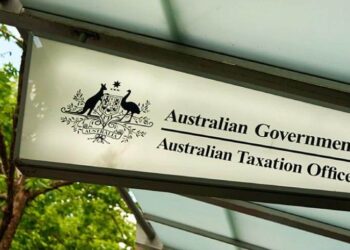In a recent online technical update, SuperConcepts technical support executive manager Nicholas Ali said when considering the payment of lump-sum death benefits, common questions typically surface, including the ideal time for benefits to be paid along with how many payments should be made for the SMSF.
Mr Ali believes it is important to note the ATO’s Taxation Ruling TR 2013/5, published in July 2013, provided much-needed clarification on the continuation of an SMSF’s pension tax exemption after the death of a member.
He notes the draft version of the ruling reaffirmed the ATO’s long-held view that SMSFs with non-reversionary pensions would revert to accumulation mode upon the death of the primary pensioner, with CGT applied on the disposal of assets as part of a lump-sum death benefit payment.
However, reversionary pensions do not stop on death but continue seamlessly to the reversionary beneficiary. Therefore, CGT would not be applicable and the fund’s exemption on tax from assets supporting the pension would continue.
“This always seemed a little inequitable. The ITA Regulations 1997 were amended in May 2013 to allow a superannuation income stream of a deceased member to retain its tax-exempt status in the fund until it can be paid out,” he said.
“Consequently, the final tax ruling was amended to allow for earnings supporting a non-reversionary pension (paid either as an income stream or lump sum) to remain exempt from CGT liability if disposed of ‘as soon as practicable’ after death. This was a sensible outcome and was in marked contrast to the ATO’s view just prior to the change.
“However, the benefit must be paid as soon as practicable for the tax exemption to continue. So, what does ‘as soon as practicable’ actually mean?”
Defining ‘as soon as practicable’
When it comes to the definition of “as soon as practicable”, there is not much guidance in the income tax legislation, according to Mr Ali.
However, there has been a long-held view that it is six months from the date of death of the member.
“This perhaps stems from the days before Simpler Super (i.e. pre-1 July 2007) where, if a reversionary pension was commuted within six months from the date of death or three months from grant of probate or letters of administration (which was the latter), the commuted amount was taxed as a lump-sum death benefit (which had a more favourable taxation treatment),” he explained.
“If it was commuted and taken as a lump sum outside the death benefit period, it was then considered an ordinary eligible termination payment (ETP), which was taxed at normal lump-sum rates (less favourable taxation treatment).
“The ATO provided some further clarification in Private Binding Ruling (PBR) Authorisation Number 1051222473595.”
In the PBR, Mr Ali said the ATO refers to dictionary definitions of the term “practicable”.
The Oxford English Dictionary defines “practicable” as meaning “able to be done or put into practice successfully”. The Australian Macquarie Dictionary defines the term as “capable of being put into practice, done, or effected, especially with the available means or with reason or prudence; feasible”.
Mr Ali said the Explanatory Statement to the Income Tax Assessment Amendment (Superannuation Measures No. 1) Regulation 2013 (Cth) provides a number of examples of where, notwithstanding delay, the payment of a superannuation death benefit will be made “as soon as it was practicable” after a member’s death.
“What we can infer from the PBR and the EM to the legislative instrument are the following key points is that the trustee needs to take all reasonable steps to administer the fund,” Mr Ali explained.
“This could include appointing an administrator to ensure compliance with legislation and regulations and in a timely manner.
“Trustees having difficulty paying the benefit due to a lack of understanding or personal circumstances will not be seen by the ATO as reasonable delays.
“Practicable means all things within the trustees’ power; not all things that are convenient. One of the delays in payment of a death benefit can be the sale of assets, particularly where there are lump assets such as property and related parties to the fund have a significant interest in them.
“Furthermore, trustees also need to do all within their power to sell the assets and pay the death benefit. The delays due to the trustees waiting for the best time to sell to maximise the asset values or looking for a way to retain the asset in super will not satisfy the ATO the benefit has been dealt with ‘as soon as practicable’. The trustee’s role is to pay the death benefit — not optimise the death benefit.”
However, Mr Ali noted that’s not to say benefits paid outside the six-month time frame are not considered death benefit payments.
This is because the ATO may accept reasons such as a death benefit nomination being challenged by beneficiaries, or even finding eligible beneficiaries.
“Indeed, the ATO looks to legal impediments to paying a death benefit in a timely manner as providing the basis for a reasonable delay,” he continued.
“In fact, such a delay may extend well beyond six months and may even stretch into years. This would still be within the realms of as ‘soon as practicable’.”


